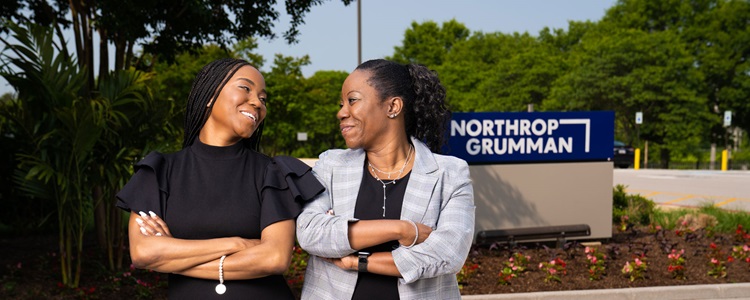What do you call yourself when you’ve always been able to work at what you enjoy most? I call myself the luckiest man alive.
FPA
JSS component is missing React implementation. See the developer console for more information.
By Brandon Hartman
According to Mechanical Technician Chet Ross, most people at Northrop Grumman’s Chandler, Arizona, facility know him as the guy who has worn the same St. Louis Cardinals baseball hat on the job every day for years. But that is not the only thing he is known for.
For over two decades, Chet has supported the development of Northrop Grumman’s GQM 163-A “Coyote” supersonic sea skimming target vehicles. Used to simulate enemy cruise missiles, the Coyote helps ensure U.S. Navy systems are ready and capable in their defenses. He has been a constant on the team, from the development of the first GQM-163A in 2003 to the 143rd target vehicle currently in production which can perform maneuvers such as high-G turns and reach speeds approaching Mach 4.
And today, he’s also known as the guy who builds the brains of the rocket.
From Farm to Space
As a young boy, Chet never imagined that he would touch rocket brains — meaning, the front end of the rocket where the flight computer, GPS and other components are located.
Growing up, he worked on his family’s Missouri farm, riding the tractor with his father as they worked the corn fields. Until he was 28 years old, he worked in the fields from dawn to dusk, raising cattle and hogs as well as growing crops such as corn and wheat.
But when the farming industry hit a troubling financial period, Chet felt the need to do something different to support his family. He moved to Phoenix, Arizona, and began making wire harnesses at an aerospace company.
“It was a whole new world,” said Chet. “I had no technical training or formal education in the manufacturing industry other than a two-week initial crash course.”
But he was hungry to learn. At every opportunity, he raised his hand to take on a new challenge or earn a new certification, quickly distinguishing himself with his tireless work ethic and innovative ideas. In 2004, he joined Northrop Grumman in Chandler. He began working assembly on rocket front ends and, soon after he started, the first Coyote came across his workspace.
A Lifetime of Transformation
For Chet, change has become a way of life.
“If you aren’t improving, you are falling behind,” said Chet. “Ever since I left the familiarity of the farm, that has been my life’s motto.”
His team has seen the benefit of his continuous learning mindset firsthand. Whenever there are new techniques or tools, Chet is the first to try them. An advocate of digital transformation, he’s led numerous efforts for the program, from the adoption of augmented reality into the assembly process to the use of an automated torque tool that saves his team hours of detailed manual effort. Chet’s innovative ideas often turn into reality on Coyote, the only supersonic sea skimming target produced in the United States. Prior to launch, he is the last person to touch the rocket, doing the honor of performing last minute preparations before watching it take flight.
“When we fire off these rockets, my journey often flashes before my eyes as everything comes full circle,” said Chet. “From starting from scratch as an entry level assembler, to now watching a product I worked on ascend to the skies.”
Though his path may have diverged from the farm fields of his youth, Chet’s roots run deep, grounding him as he continues to learn and grow.
“It was the lessons learned on the farm of hard work and resilience that prepared me,” said Chet, whose wife also works for Northrop Grumman as a mission assurance analyst. “My team is really like an extended family, and I could not have hoped for a better and more rewarding career. I sleep better at night knowing that the work we do ensures U.S. missile defense systems are as effective as they can be.”
Life at Northrop Grumman
Your work at Northrop Grumman makes a difference. Whether you want to design next-generation aircraft, harness digital technologies or build spacecraft that will return humanity to the moon, you’ll contribute to technology that’s transforming the world. Check out our career opportunities to see how you can help define possible.


Parallel Pathways
There’s no doubt about the direction Alisa Joseph and Eboni Fotang prefer to take: it’s always forward, together.

Launch Traditions, Superstitions and Lore
Launch team members share traditions, superstitions and lore that powered them through liftoff, re-entry and everything in-between.